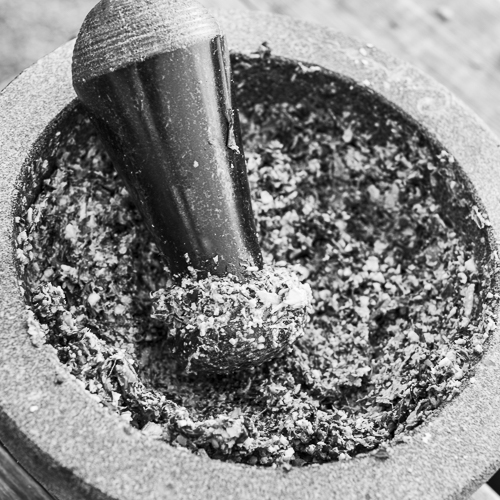I recently joined a course about collecting wild, edible plants, which most people consider as weeds to be removed or at most tolerated. The course was run by Hedda Kortnes, a woman who has a wide knowledge about which types of food are most nutritious for us. In fact, I also joined her course on ancient types of grain, like emmer and einkorn, and wild legumes some years ago. Then, we were divided into groups of 2-3 persons and asked to make one course each, based on a recipe.
We met at Lier Bygdetun near the place where the beekeepers’ association in Lier, Røyken and Hurum have their beehives. After a short introduction, we were asked to collect weeds, starting with ground elder, a plant which is widely considered a pest, but is in reality tasty and nutritious. In fact, it was growing next to one of the buildings in large quantities, making it very easy to collect it. Next, we walked a short distance, collecting plants like common nettle, dandelion and fireweed or rosebay willowherb. In addition, our instructor had already collected a large amount of ramson in another place because it doesn’t grow at the place of the course.
After having collected a large amount of edible weeds, each group should make one course each using a recipe. Our group should make a vegetable stew, a pie and pesto. I should do the pesto, which consisted of chopping up ground elder into small pieces, next putting them into a mortar and adding almonds and garlic. By crushing all of it with a pestle, it was gradually turned into pesto. Then, I added some parmesan cheese, olive oil, salt and pepper. When we had finished preparing our meals, we put them on a table inside the house. At the end, each participant should tell what they had made and how they did it. Finally, we brought all of the food outside and we had a tasty and delicious dinner on a balmy evening. A great experience, indeed.

